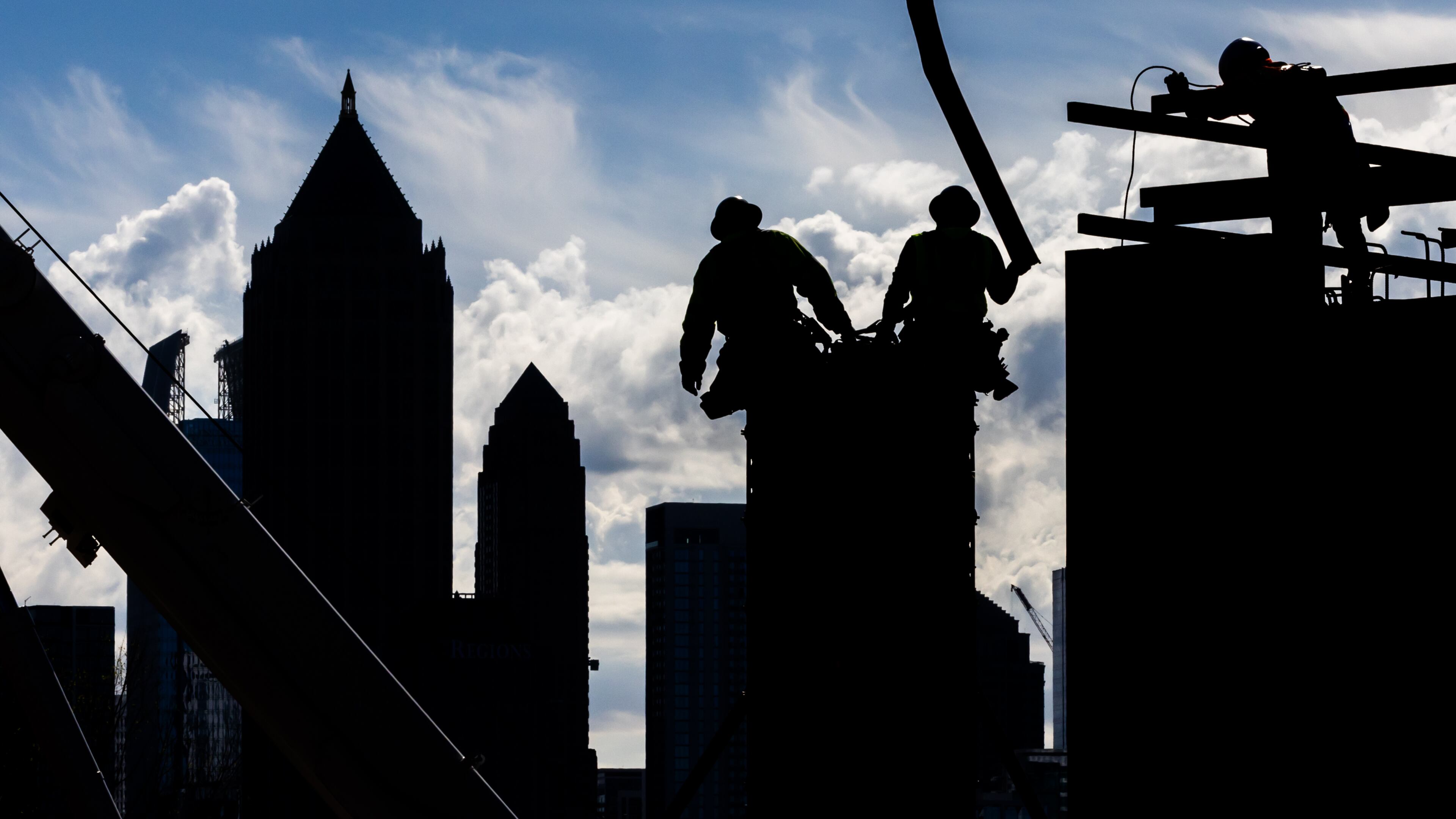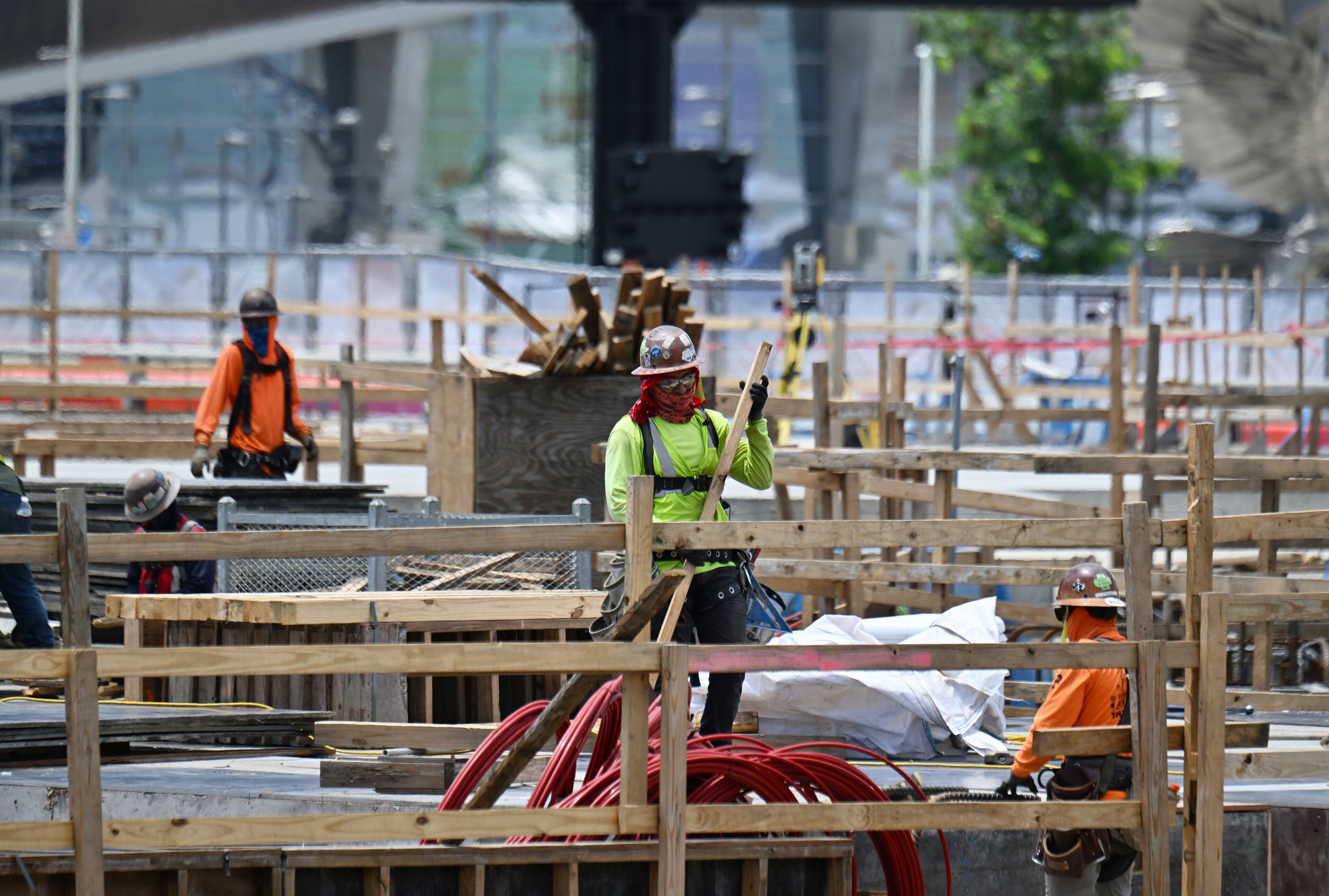‘Diseases of despair’ afflict construction industry in Georgia

Editor’s Note: This story includes discussion of suicide. If you or someone you know needs help, the national suicide and crisis lifeline in the U.S. is available by calling or texting 988. There is also an online chat at 988lifeline.org
Rob McKinney, a 52-year-old construction safety advocate based in Clarksville, describes construction as a “VUCA” industry.
“It’s Volatile with pricing. It’s Uncertain with weather. It’s Changing with documents and owners,” McKinney said. “And Ambiguous. It would take us an hour to explain to you why it’s so ambiguous with contract language and things like that.”
McKinney entered the field as a safety director after graduating from Georgia State University and serving in the Peace Corps. He worked night shifts, traveled far distances and spent time away from his family.
The pace took a toll. McKinney said he suffered from dozens of panic attacks over the years, five of which landed him in the hospital. While his job wasn’t the only thing that led to the attacks, he said the construction industry’s culture of “bravado” did intensify his problems.
According to the latest data from The Center for Construction Research and Training, a nonprofit that seeks to reduce occupational injuries and fatalities, construction workers made up about 20% of Georgia’s fatal occupational injuries in 2023, despite constituting only 8.2% of the workforce. The industry accounted for 5.2% of the state’s GDP that year.
The dangers are mental, as well as physical. Male construction workers face a suicide rate 75% higher than that of the general population, according to data from the U.S. Centers for Disease Control and Prevention.
“It’s not easy work,” McKinney said.
Long work days, job instability and workplace culture are factors contributing to the high suicide rate, according to Chelsea Piatt, Georgia associate area director of the American Foundation for Suicide Prevention.
In April, the foundation hosted a “Construction Hike for Hope” at Westside Reservoir Park, a fundraising event for construction industry mental health initiatives.
The name was changed from “Hike for Hope” in previous years, addressing a consistent gap in mental health resources for construction workers, Piatt said. While previous hikes have focused on general suicide prevention, this event aimed to specifically bring together construction workers and their families.
“Sometimes in the construction industry,” Piatt said, “it’s a little bit stigmatized, still, talking about mental health.”
Opioid-related deaths, which increased by 302% in Georgia from 2010 to 2022, are also rampant in the construction industry, experts say.
With few options for paid leave, construction workers often work through injuries, which can lead to lingering problems, prescribed opioids and a physical dependency on drugs, according to Chris Cain, executive director of The Center for Construction Research and Training.
“Between 5,000 and 6,000 construction workers die each year by suicide,” Cain said. “Between 15,000 and 17,000 construction workers die each year by fatal overdose.
“Altogether, more than 20,000 construction workers are dying each year from these diseases of despair.”

The construction industry is still growing in Georgia. Data center construction projects are on the rise, and this summer, Atlanta Public Schools has partnered with Construction Ready to launch a four-week training program in the construction trades. However, alongside economic expansion remain problems with hiring new workers, said Mike Dunham, CEO of the Associated General Contractors of Georgia.
“We certainly have an industry that is challenged by having enough people to do the work,” Dunham said. “Every day, I hear contractors have to say they’ve turned down work opportunities because they just didn’t have the people.”
Mental health and safety issues have gained fresh attention as federal immigration crackdowns have deepened an existing shortage of construction workers.
The nonpartisan Georgia Policy and Budget Institute lists construction as the industry with the highest percentage of immigrant workers in the state. Gabriela Matute, executive director of the Georgia Hispanic Construction Association, said that some Latino construction workers — wary of encounters with ICE — are now reluctant to go to worksites.
“They have job permits, but still, they fear that ICE will come to them no matter what because that has happened,” Matute said.
Within the Hispanic community, cultural stigmas surrounding mental health can also hinder access to help and intervention, according to Matute.
“People fall, people break their arms,” Matute said. “That’s something you see. Mental health, you don’t, but it is as dangerous as an injury.”
The construction industry also features a male-dominated workforce and a high percentage of veterans, traits that some say could make workers more susceptible to suicide. However, Cain said that the construction industry’s disproportionate risk cannot be defined by demographics alone.
“It can’t be explained away by veteran status or any one factor,” Cain said. “The elevated rates of suicide in construction are not just males. Women in construction have elevated rates of suicide as well.”
June marks both National Safety Month and Men’s Health Month, a time to reflect on workplace safety and well-being. There are resources in place for individuals in the construction industry who may be struggling.
The American Foundation for Suicide Prevention recently launched “Talk Saves Lives: Construction,” an educational program aimed at improving mental health dialogue within the industry.
The Georgia Hispanic Construction Association, based along Buford Highway, also offers meet and greets, formal safety trainings and educational panels that can foster a sense of community in an otherwise isolating field, according to Matute.
“(Safety) is not an option,” Matute said. “It is a must.”


